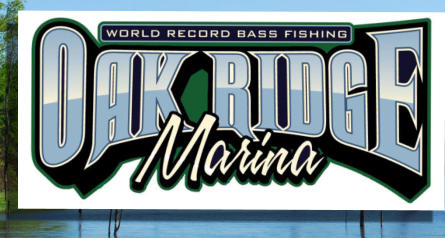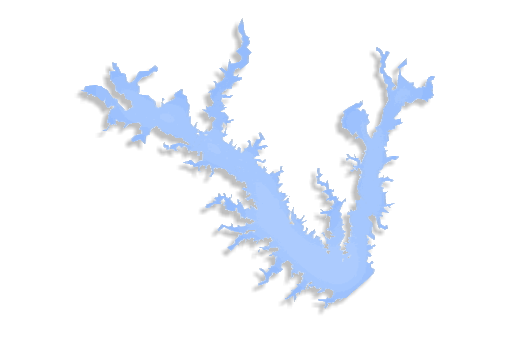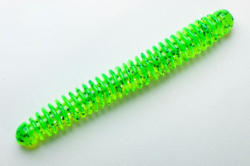

FISHING LAKE FORK
COPYRIGHT 2016 OAK RIDGE MARINA
ALL RIGHTS RESERVED
RESTAURANT
TACKLE STORE
MOTEL - RV PARK
Expectations
While Lake Fork is world-known for it’s big bass fishery, fishing here does not guarantee a double-digit bass. Many locals have fished Fork for years without that achievement. To the average angler, on any given day, Lake Fork offers excellent opportunities to catch 7+ lb. bass. However, the bass at Lake Fork are HEAVILY pressured. This means that they have seen just about anything you can throw at them. They get tight-lipped at times and you can’t BUY a bite. While you can have your best days ever on Lake Fork, you can also have your worst days.Just Three Things…
After you’ve fished Fork for awhile, you start to figure out that catching fish here boils down to three things: 1. What To Fish 2. Where To Fish 3. When To Fish It sounds really simple but the truth of the matter is that if you don’t get at least two out of three of them right, you won’t catch fish!What To Fish
As anglers, this is the part we enjoy the most: shopping at the tackle store! Bass Pro didn’t get popular because of the food in their restaurants; they became successful because most of us are on a quest to find the magic lure! All of the seasonal baits can be successful here at Lake Fork. However, without going into a general discussion on seasonal bass patterns (there are plenty of sources for that), let’s focus on some of the most popular baits here at Lake Fork. For several years now, the top selling bait has been a Zoom Finesse Worm in Tomato Red color. If you drop shot, that’s the first color you should try. Don’t be afraid to mix it up. Throw it on a shakey head. Upgrade to a Zoom Centipede or Zoom Trick Worm in Tomato Red. Look at other similar colors too (Watermelon Red Tomato, Green Pumpkin Tomato, Cherry Seed, Strawberry). Recently, another bait has become even more popular than the Tomato Finesse Worm. Mark Pack, one of the long-time Lake Fork guides and FLW Pro, began catching bass very successfully using a Zoom Magnum Super Fluke in Disco Violet when the bass are deep. Here’s the trick: throw a Mag Super Fluke weightless in 20-30 feet of water! Use a REALLY big sharp hook (Trokar 6/0-8/0?) to give it just a little weight and plenty of room for the plastic to clear the hook, throw it out in 30 feet of water and then take a coffee break while it sinks to the bottom. If you’re throwing through suspended fish, they might hit it on the fall. If they’re on the bottom, just bump it along, reel in a foot of line, bump it again… lather, rinse, repeat! Why does it work? It’s a big bass bait with a finesse technique! The last couple of years have also proven that Lake Fork has a pretty good swimbait bite. The bigger, the better. The anglers that know are throwing 7” and bigger swimbaits; the ones just starting to try swimbaits will dip their toe in the water and gravitate to smaller 3” to 5” swimbaits which, generally speaking, aren’t as successful as the larger baits. What we’ve seen when the spring swimbait bite is REALLY on is that the bite is all about the size of the bait and the action; size matters but style and color don’t. Bass are feeding up both pre- and post-spawn and one big meal takes less effort than ten little ones. A big bait with good action will get bit. Lake Fork is probably the lake most responsible for the success of the flutter spoon. These baits create an action that, quite frankly, you can’t duplicate manually. They fall in a random fluttering fashion like a leaf falling off of a tree. And bass LOVE them. What started as 3” and 4” baits have gone wild recently with oversized versions pushing 8” and 9”. And yes, they work too! Another great technique in the heat of summer? Throw a carolina-rig setup with a chartreuse pepper bait (ring worm, ring fry, centipede, tornado, bubble fry) in 20-30 feet and hang on! The hotter and brighter it gets, the better this technique works. Much of the time, what works here at Lake Fork are the same things that work at other lakes BUT bigger is often better. Bigger crankbaits, bigger squarebills, bigger jerkbaits, bigger and heavier chatterbaits… they ALL work! Like to throw a big worm? Try a Berkley 10” Power Worm in Blue Fleck. Oh, and by the way, you can’t go wrong throwing a jig. Big bass just LOVE jigs.Where To Fish
Figuring out where to fish at Fork is a two-step process: find the structure and then find the fish. Find the Structure: Most of the usual suspects work well here at Fork: steep banks, shallow flats, main-lake points, creek-channel bends, etc. can all hold both nomadic and territorial fish at the right time of year. The golden rule of following the baitfish seems to be even more true the last few years at Fork because, while the lake has been low, the lack of shallow cover has increased the number of nomadic fish. These fish spend a good portion of their time chasing schools of baitfish around rather than staking out a particularly good piece of cover and waiting to ambush prey. Certain locations will always hold fish, especially if there is habitat there, like timber or brush piles. As you move around the lake, you will come across many brushpiles if you pay attention to your fishfinder. TPWD has placed fishing attractors (artificial brush piles) around the lake to provide additional habitat for fish. Not only that, they’ve even been so kind as to tell us where they put them! The GPS co- ordinates of these attractors are published on the TPWD website and can be found using the link below: - TPWD fish attractor locations for Lake Fork Find the Fish: Okay, so you found some good spots. Even habitat on structure. Now what? Most of us stop here and start fishing. Why? There’s good structure all over the lake. You can find the best structure in the world but if there aren’t any fish there, what’s the point? It doesn’t matter what bait you throw or when you throw it, if there are no fish there, you won’t get bit. The most important thing to do once you’ve found good structure is to use your graph to look for fish. If you pull up on a spot and don’t see any fish on the graph, go look somewhere else! The only reason to stay there is if you expect the fish to move into that spot sometime soon.When To Fish
Believe it or not, this is the one factor we know the least about and have the least amount of control over! We don’t know why fish bite when they do. We think we understand time of day and weather influence but it doesn’t change the fact that, while you can find fish all over the lake, some will bite and some won’t. At the same time. Under the same weather influences. You can throw the right bait where the fish are but if they aren’t ready to eat, you won’t get bit. This is why you’ll see so many of the Lake Fork guides running all over the lake. They’ll pull up on a spot and find the fish but if the fish aren’t ready to bite, you’re wasting your time fishing there RIGHT NOW. Come back later! The key to consistently catching fish at Fork requires you to locate fish in several locations and then move between those locations until you find fish that are ready to bite! If you’re not a run-and-gun type of angler, you do have an alternative. Find a spot where you expect the fish to be at some point during the day. Then fish that area until they show up! You may only catch fish during a 15-minute period but when you do, it’ll be a blast! And that’s the best thing about fishing Lake Fork. On ANY cast, with ANY bait, on ANY spot, at ANY time, you COULD catch the fish of a lifetime!




EMAIL: info@oakridgemarina.com
















